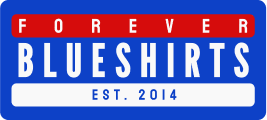There’s stiff competition for the Rangers 3rd and 4th lines this season

cdn.viasatsport.se
The Rangers have a glut of bottom-six forwards, and that’s a good thing.
With the recent signing of Jarret Stoll, the Rangers have created a desirable dilemma for themselves; they have a logjam of forwards fighting for bottom-six roles. To specify, the Rangers have two open slots and five players competing for them. Leaving the top-six unchanged from last year and assuming that Emerson Etem, Kevin Hayes, Jesper Fast, and Dominic Moore are locks to make the team, there are spots available on the third and fourth lines which will be filled by a pair of Oscar Lindberg, Viktor Stalberg, Jarret Stoll, Ryan Bourque and the infamous Tanner Glass. This is the kind of offensive depth that coaches love to have come playoff time and can help keep the Rangers’ offense afloat in the event that injury strikes.
Having this many forwards jockeying for only two spots breeds competition in training camp that leads to improved play among the candidates. The Stoll signing made it clear that Lindberg wasn’t going to take the easy road onto the roster just because he got an NHL contract. He will have to outcompete a pair of NHL veterans to claim his spot with the big club. The same goes for the undervalued Ryan Borque who will come into training camp as a wildcard to make the roster after his brief debut on the fourth line last season. The veterans Stoll and Stalberg won’t just be guaranteed roster spots either and risk being sent to the AHL if they can’t out compete the youngsters.
The biggest question coming out of this will be whether Tanner Glass is still on the roster come October. He’s both observationally and statistically at the very bottom of the league, unable to play a defensively responsible fourth-line game and even inadequate as an enforcer (something that’s anyways not a very useful trait in today’s NHL). Gorton has provided AV with more than enough superior replacements who are also more cost-effective for the team. If Glass is still playing in a Rangers’ sweater, it will be 100% the fault of the coaching staff, not management.
thenypost.files.wordpress.comAfter addressing the Glass issue, the coaches will need to figure out how they want their lines to be structured. Last year’s bottom-six was a third line of Carl Hagelin – Kevin Hayes – J.T. Miller and a fourth line of Tanner Glass – Dominic Moore – Jesper Fast. Miller or Hayes will likely be playing top-six minutes this season meaning the third line will experience the most change in terms of it’s playing style.
The Rangers will need to find a way to effectively balance out the speed and defensive ability of the depth pieces available and maximize the group’s production. Etem and Stalberg bring added size without sacrificing much in terms of speed. Stoll brings face-off acumen and defensive play and Lindberg, though still unproven at the NHL level, will likely bring important two-way play.
A well balanced bottom-six would look something like this:
Emerson Etem – Kevin Hayes/J.T. Miller – Jesper Fast
Viktor Stalberg/Jarret Stoll – Dominic Moore – Oscar Lindberg
Etem centered by Hayes/Miller with Fast can be a quick-strike line that can also pin opponents in the offensive zone for extended periods. All four of them use their bodies along the boards to win puck battles and have good offensive skills. Miller and Hayes are natural playmakers, Etem has tons of scoring potential and slick hands, and Fast has shown that he’s willing to drive to the net. Together they could be a very effective third line.

sport-xl.org
The fourth line has two different flavors. A Stoll, Moore, Lindberg line would be a shutdown line composed of three centers who are all very good at winning important face-offs and killing penalties. Swapping out Stoll or Lindberg with Stalberg makes the line a more offensively oriented checking line that can forecheck deep in the zone and create scoring opportunities. Both are important aspects of a fourth line and can be alternated depending on the opponent that the Rangers are facing.
The Rangers have a very strong potential bottom-six group for this season that can be a key part of another Stanley Cup run. The question is, will the coaching staff recognize the tools that it has available and deploy those tools effectively?
September and the opening of training camps is just around the corner. It will be very interesting to see just how the third and fourth lines shake out from there.
More About:New York Rangers Features
